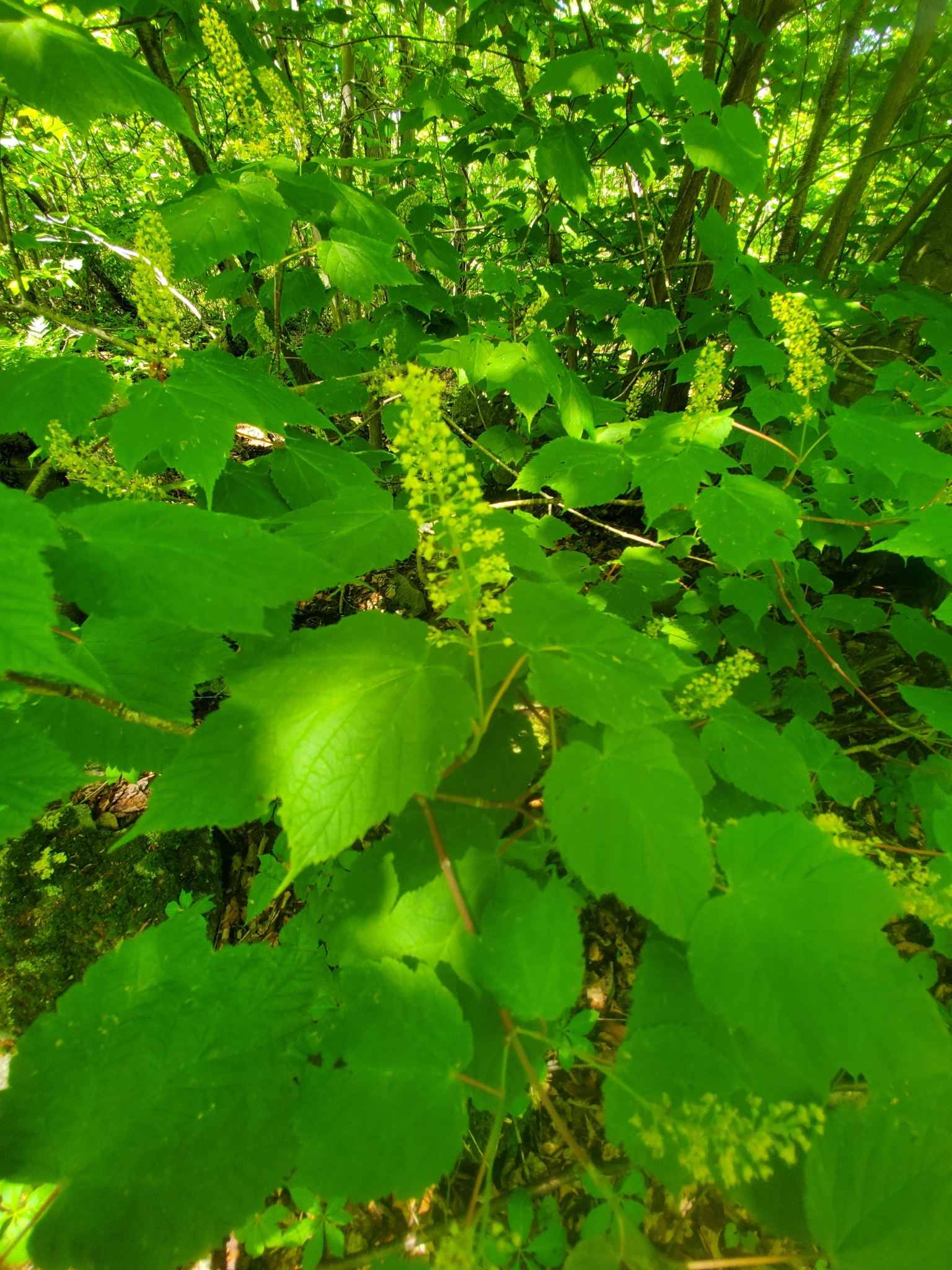Mountain Maple
Acer spicatum Lam.
Description
Mountain maple is a member of the soapberry family (Sapindaceae). It is a multi-stem shrub³ or small tree that seldom exceeds 25 feet tall.¹ The trunk is often crooked and much branched with reddish-brown bark.³ The opposite leaves have 3 to 5 shallow lobes and where 5-lobed, the lower two lobes are obscure. The leaf blade is 3 to 6 inches long with serrated margins. ¹ The leaf has a heat-shaped base.³ The underside of the leaf has small white hairs.³ The flowering stalk is erect and up to 3 inches long with male flowers towards the end and female flowers at the base. ³ For maples it has the unusual trait of insect pollination. 7 The individual flowers are less than one inch wide. ¹ Fruits are pairs of winged seeds (samaras) each about one-inch long and at right angles to one another. ²

Mountain maple with leaves and flowers. @ K. Booth (CC BY-NC 4.0) Maryland Biodiversity Project 4

Fruits of mountain maple. @ A. Martang (CC-BY-SA 4.0), Plant Net
Distribution
Mountain maple is distributed from Newfoundland to Sasskatchewan, Canada, along the Great Lakes region and south along the Appalachian Mountains to North Carolina and Tennessee.³ It is found in rich, moist soils often along rivers, but also in rocky uplands.³ In Maryland it is restricted to the mountains of Allegheny and Garrett counties.4

Native distribution of mountain maple. USGS 5
Wildlife Importance
Mountain maple is browsed by white-tailed deer and moose.² On Isle Royale, Michigan, mountain maple the second preferred food of moose, especially in winter.7 It is also used by American beaver for food and dam construction. It supports the larvae of Imperial Moth¹ , the Dagger Moth and Banded Tussock Moth. 4 Ruffed Grouse consume the buds. ³
Economic Importance
Mountain maple has little economic importance. It is generally unavailable in commercial trade and difficult to cultivate. ¹
Threats
There are few serious threats to mountain maple. ¹ It is affected by aphids and scale in addition to fungi. 6
Interesting Facts
- Mountain maple is easily confused with striped maple. It may be distinguished by having erect flowers, hairs on the lower leaf surface, no green-striped stems. ³
- Native Americans used mountain maple to make arrows and to treat coughs and wounds.³
References
- North Carolina State Extension: Acer spicatum
- Minnesota Wildflowers: Acer spicatum
- Trees of the Adirondacks: Mountain maple (Acer spicatum)
- Maryland Biodiversity Project: Mountain maple
- USGS: Mountain maple
- Iowa State University Extension and Outreach: Mountain maple
- USDA Fire Effects Information System: Acer spicatum
Contributed by J. Hull
